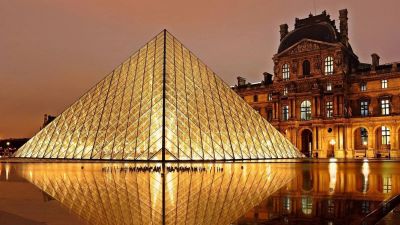The tinkling of a bell
Every era has its own fascination, its distinctive treasure to speak of. Yet bells have been an eternal favourite with mankind. A church or ...

Every era has its own fascination, its distinctive treasure to speak of. Yet bells have been an eternal favourite with mankind. A church or a temple – the bell has its place. The morning arati or the final gong to conclude the day, the sound of a bell never cases to alleviate a soul from despair. The communion with the Lord is made all the more pleasurable, more divine accompanied with the sometimes sweet, sometimes shrill notes of a bell.
Today the bell is not merely known for its religious intent. The aesthetic angle also become important. Ancient brass bells brings with them a rare charm and nostalgia for the good old days. At Sanskriti, Koregaon Park, you can find a whole range of bells: temple bells, cow bells and even Puja bells. The wooden bells make a deep resonant sound which can awaken even the most insensitive souls from their slumber. The pujari rai silambu which is an ellipsoidal ring made of iron alloy has a sprinkling of tiny flowers and diamond cut-work. It is hollow and filled with metal balls and makes a tinkling sound. In the days of yore the village priest would shake it and predict the future.
Terracota bells hung over a cluster of plants compel the viewer to dwell on the welcoming ambience before moving into the house. Embellished with Ganapatis and the om symbol, the bells can transform a verdant patch. At the Pinto’s residence in Clover Village you can find bells of all shapes and sizes and a varied range materials.
Mumtaz Peerbhoy of The Attic on Dhole Patil Road has bells on front door to usher you in. Very popular with her clients are cylindrical bells for the balcony and window sills, ornate Puja bells and front door bells all in brass.
Ravina Bithar, a Home Design Consultant, recommends using chimes in the house. She says, “According to the Chinese art of Feng Shui the main door of a house or apartment is of vital importance because it breathes chi or gi (the wind) into the interiors. Some geomancers hang a chime in the doorway to dispel si qi (dead wind) and make it disappear”.
She tells us that Feng Shui which is based on the yin and yang philosophy has survived the test of time and exerted itself on numerous people and countless designers and developers. What is Feng Shui though? It is the art of placement of things ranging from the orientation of buildings to the furnishings of interiors so as to influence the cosmic breath of a site. Bithar advocates using wind chimes to draw in the good qi or chi so as to promote positive Feng Shui.
Pushpa Thawani who owns a set of Chinese chimes with a fish motif tells us that three symbols namely the tortoise, fish and teddy bears are considered extremely auspicious by the Chinese and if the chimes have any of these motifs they are extremely good omens.
Whether you follow Feng Shui or not the tinkle of a bell can fill your mind with peace. In Scandinavia beautiful bells were used on the doors to alert the residents of the house of the enemy or approaching danger. Whether it is to be forewarned or simply for the sake of beauty, can you imagine life without bells? Even the modern-day electric buzzer draws inspiration from the ancient tradition of bells. A tradition to be valued not only because it weaves a sense of nostalgia but also because it gives a much brighter perhaps even more romantic vision to life inured to cynicism of the present days.



- 01
- 02
- 03
- 04
- 05



























